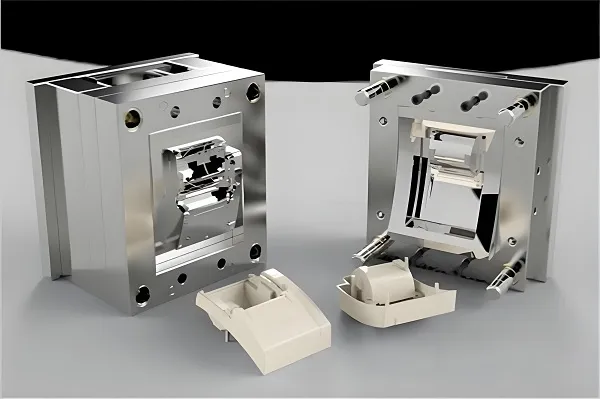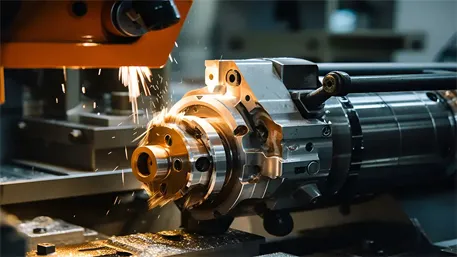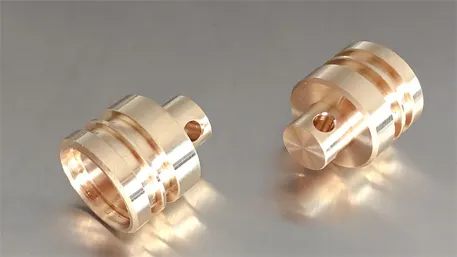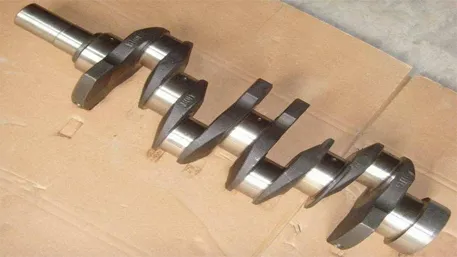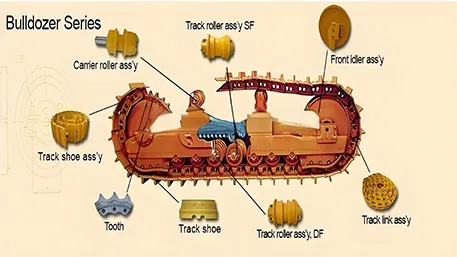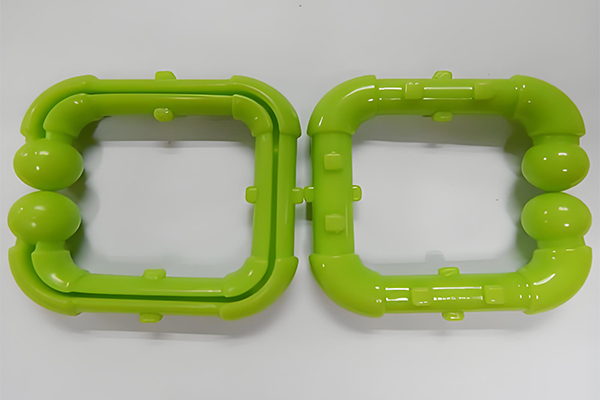In the aerospace, automotive, and industrial sectors, engine mounts are critical for ensuring stability, reducing vibration, and extending equipment lifespan. CNC (Computer Numerical Control) machining offers unmatched precision and material control for crafting high-performance engine mounts tailored to specific power systems. This article explores the technical advantages, material selection, manufacturing processes, quality control, and applications of custom CNC engine mounts.
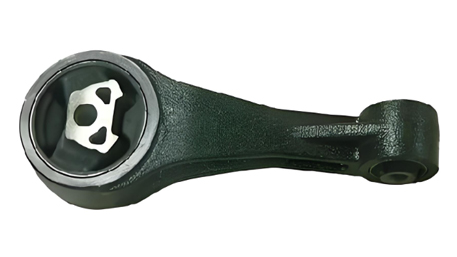
I. CNC Technology Overview for Engine Mount Manufacturing
CNC (Computer Numerical Control) machining is a subtractive manufacturing process that uses pre-programmed computer software to control machine tools for precise material removal. For engine mount production, CNC technology offers:
- Multi-Axis Flexibility
- 3-axis machining handles basic milling and drilling for simple mounts.
- 5-axis machining creates complex 3D shapes (e.g., curved surfaces, undercuts) with a single setup, reducing errors and improving efficiency by 70%.
- Micron-Level Precision
- Positioning accuracy: ±0.005mm
- Repeatability: ±0.01mm
- Surface finish: Ra ≤ 0.4μm (polished finishes down to Ra ≤ 0.1μm available)
- Automation & Consistency
- Reduces human error through digital programming.
- Ensures identical results across batches, critical for mass production.
II. Material Engineering & Selection Strategies
Choosing the right material is critical for engine mount performance:
- Vibration & Shock Resistance
- 6061-T6 Aluminum: Lightweight (2.7g/cm³) with tensile strength ≥ 276 MPa, ideal for automotive and aerospace mounts.
- 4130 Chromoly Steel: High tensile strength (≥ 620 MPa) for heavy-duty industrial applications.
- Ti-6Al-4V Titanium: Lightweight (4.5g/cm³) with strength ≥ 895 MPa for aerospace and racing engines.
- Thermal Stability
- Titanium mounts withstand temperatures up to 315°C, making them ideal for aerospace and high-performance engines.
- Cost-Effective Solutions
- High-density polyethylene (HDPE) mounts offer vibration damping at a lower cost for small engines.
III. CNC Machining Processes for Engine Mounts
CNC technology employs advanced techniques to meet power system demands:
- Roughing & Finishing Operations
- High-feed roughing removes material quickly, while finish milling achieves tight tolerances.
- Tool Optimization
- Coated carbide tools with high-pressure coolant systems minimize heat during steel machining, extending tool life by 3x.
- Surface Treatments
- Anodizing for aluminum mounts improves corrosion resistance (500+ hours salt spray protection).
- Powder coating for steel mounts provides durable finishes.
IV. Quality Control & Compliance
Engine mounts undergo rigorous testing to meet global standards:
- Dimensional Accuracy
- CMM (Coordinate Measuring Machine) ensures critical dimensions (e.g., bolt hole spacing) adhere to ±0.01mm tolerances.
- Material Verification
- Spectroscopic analysis confirms alloy composition (e.g., 6061’s 0.8–1.2% silicon content).
- Tensile and hardness tests validate mechanical properties (e.g., 4130 steel’s Rockwell C hardness ≥ 22).
- Performance Testing
- Vibration testing simulates engine frequencies to ensure mounts reduce amplitude by ≥ 50%.
- Fatigue testing ensures 1 million+ cycles without failure for automotive mounts.
V. Applications in Power Systems
- Automotive & Racing
- 6061-T6 aluminum mounts with precision-machined rubber inserts reduce engine noise and vibration in high-performance vehicles.
- Aerospace
- Ti-6Al-4V mounts, machined to Ra ≤ 0.8μm, support jet engines while minimizing weight.
- Industrial Machinery
- 4130 steel mounts with anti-corrosion coatings withstand harsh environments in construction and agricultural equipment.
VI. Frequently Asked Questions (FAQ)
-
What is the typical precision of CNC engine mounts?
CNC machining achieves ±0.01mm tolerance and Ra ≤ 0.8μm finish, meeting ISO 2768 and ASME Y14.5 standards. -
How do I choose the right material?
For lightweight applications, select aluminum or titanium. For heavy loads, choose chromoly steel. -
What is the lead time for custom mounts?
Simple parts take 5–7 days; complex aerospace mounts require 10–15 days. Rush orders are available. -
Can CNC mounts meet industry certifications?
Yes. Parts comply with ISO 9001, ASTM, and aerospace standards like AS9100. -
How does CNC machining compare to traditional methods?
CNC reduces material waste by 30% and cuts lead times by 40%, while delivering superior precision and consistency.
VII. Customer Testimonials
“CNC technology transformed our aerospace engine mounts.”
— Mark Johnson, Chief Engineer at Aero Dynamics
“The 5-axis machining ensured our Ti-6Al-4V mounts fit perfectly with the new engine design. The weight reduction of 40% improved fuel efficiency without sacrificing strength.”
— Mark Johnson, Chief Engineer at Aero Dynamics
“The 5-axis machining ensured our Ti-6Al-4V mounts fit perfectly with the new engine design. The weight reduction of 40% improved fuel efficiency without sacrificing strength.”
“Unmatched precision for high-performance racing.”
— Sarah Lee, Product Manager at Auto Innovators
“The 6061-T6 mounts with CNC-machined rubber inserts reduced vibration by 60%. The CMM reports gave us full confidence in mass production.”
— Sarah Lee, Product Manager at Auto Innovators
“The 6061-T6 mounts with CNC-machined rubber inserts reduced vibration by 60%. The CMM reports gave us full confidence in mass production.”
“Industrial mounts that outlast the competition.”
— Carlos Rodriguez, Plant Manager at Heavy Industries
“The 4130 steel mounts with corrosion coatings lasted 30% longer than previous models. The CNC process minimized downtime during installation.”
— Carlos Rodriguez, Plant Manager at Heavy Industries
“The 4130 steel mounts with corrosion coatings lasted 30% longer than previous models. The CNC process minimized downtime during installation.”
“Cost-effective solutions without compromising quality.”
— Mike Chen, Production Engineer at Small Engine Corp.
“For our lawn mower engines, HDPE mounts from [Your Company] cut material costs by 40% while maintaining vibration control. The quick turnaround kept our supply chain running smoothly.”
— Mike Chen, Production Engineer at Small Engine Corp.
“For our lawn mower engines, HDPE mounts from [Your Company] cut material costs by 40% while maintaining vibration control. The quick turnaround kept our supply chain running smoothly.”
Request Your Custom Engine Mounts Today!
From automotive to aerospace, our CNC machining expertise ensures engine mounts that combine precision, durability, and compliance. Contact us to discuss your project requirements and receive a tailored solution that meets your timeline and budget. Let’s power your systems with excellence!
From automotive to aerospace, our CNC machining expertise ensures engine mounts that combine precision, durability, and compliance. Contact us to discuss your project requirements and receive a tailored solution that meets your timeline and budget. Let’s power your systems with excellence!

